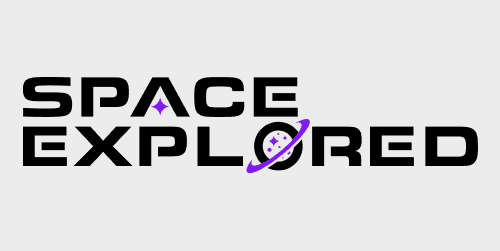
Blue Origin released details on the requirements their astronauts will need to fly their New Shepard rocket. Do you have what it takes to fly on the first crewed flight this July?
On May 5th, Blue Origin announced details about how to get a ticket on the first crewed flight of a New Shepard rocket. While it took many years to get to this point, it is exciting that it is finally here, even if the price is extremely high.
Along with the details on the seat auction, they also released the requirements for being able to fly on the New Shepard vehicle. It includes certain height and weight, physical fitness, and how well you take verbal and visual commands.
Here are the list of requirements:
- Be within the following height and weight range: 5’0” 110 lbs. and 6’4” 223 lbs.
- Dress themselves in a one-piece, zip-up flight suit;
- Climb the New Shepard Launch Tower (equivalent to 7 flights of stairs) in under ninety (90) seconds; Walk quickly across uneven surfaces, such as a ramp or a deck with occasional steps.
- Be comfortable on the top deck of the launch tower and on the grated gangway to the CC. These are about seventy (70) feet above ground level and are surrounded by balcony-like railings. The view is equivalent to the view from a seventh floor balcony.
- Fasten and unfasten his/her own seat harness in under fifteen (15) seconds, which is about as difficult as fastening the seat-belt in an unfamiliar car in the dark.
- Sit strapped into the CC’s reclined seat for forty (40) minutes, but up to ninety (90) minutes if there is a long launch delay, without getting up, and without access to a bathroom.
- Spend forty (40) minutes, but up to ninety (90) minutes if there is a long hold, in the CC with up to five (5) other people with the CC hatch closed;
- Experience up to three times your normal weight (3gs) pushing you into your seat for up to two (2) minutes during powered ascent;
- Hear and understand instructions in English from a ground crewmember nearby or from mission control over a radio speaker, in an environment where the noise level can reach one hundred (100) dB during the Flight;
- See and respond to alert lights in the CC. At each seat, there is a panel of six (6) lighted symbols to indicate, for example, when to fasten the harness or leave the CC (the lights are similar to the warning lights on a car’s dashboard; the use of corrective lenses is permitted because glasses and contact lenses both function normally in zero-g);
- Reliably follow instructions provided either over the radio speaker or via the alert lights;
- Experience up to five-and-a-half times one’s normal weight (5.5gs) pushing the Astronaut into his/her seat for a few seconds during descent into the atmosphere; and
- Lowering down from the CC’s hatch opening to the ground after landing, which is equivalent to lowering down to the floor from a dining-room table (note that Blue Origin expects to provide the option of using stairs within a few minutes of landing).
What is this equivalent of?
When it comes to the G-Forces being pushed on you, many roller coasters have peak G’s at or above these limits. Most people are probably familiar with the different rides at Walt Disney World so let’s use those for examples. At EPCOT, Mission Space is a centrifuge-based ride where you go through a simulated launch and landing on Mars. The sustained G’s on that ride is 2.5 G’s, close to how many G’s New Shepard will experience during launch.
For the descent, Blue Origin says you must be able to withstand 5.5 G’s, if you ever rode Rock ‘n Roller Coaster at Disney’s Hollywood Studios, you would have experienced up to 5 G’s during the initial launch of the ride. Now, this is peak G’s not sustained G’s so of course, if you are looking to ride on New Shepard you should consult your doctor to make sure you truly can experience these G-Forces.
Want to help support Space Explored?
Shop on Amazon to support Space Explored writers.
Enjoy reading Space Explored?
Help others find us by following on Apple News and Google News. Be sure to check us out on YouTube, Twitter, Facebook, and Instagram, join our Discord!
FTC: We use income earning auto affiliate links. More.


Comments